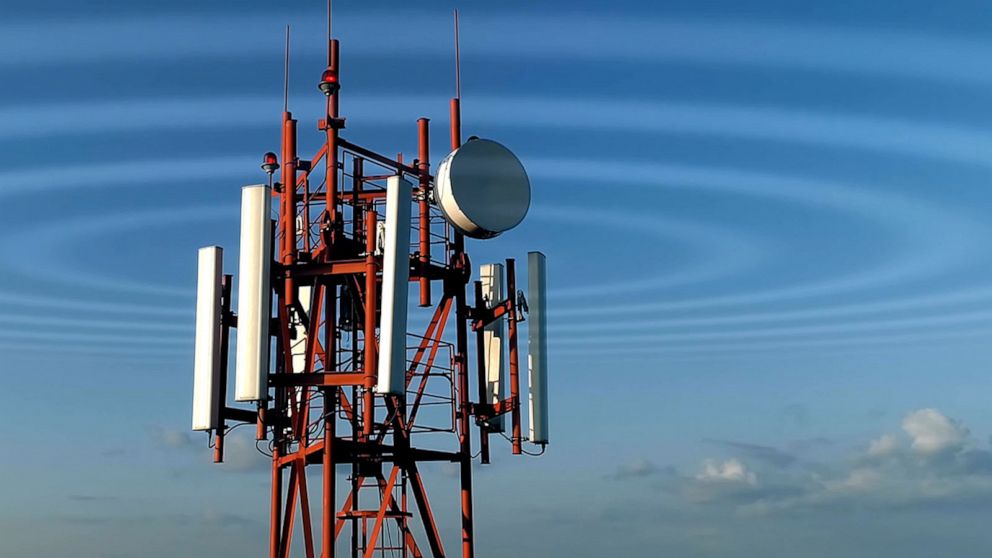If you've ever walked through a city, you may have seen tiny cell towers for 5G placed on poles for street lighting. what is a safe distance from a 5g cell tower appear like tiny boxes however they're actually sending wireless signals from cellular providers to your phone.
The smaller ones are being replaced by the larger, purpose-built cell towers. Although they're not as visible but they can still create problems for those who live nearby.
A of the FCC's Radiation Exposure Thresholds

The FCC's Radiation Exposure Thresholds define the maximum amount of time one can expose to electromagnetic radiation from wireless devices. The limits for exposure are based upon scientific research which prove that electromagnetic energy can be harmful to human health.
The specific absorption rate (SAR) is an indication of the radiofrequency energy that is taken up by tissues. It's typically 1.6 watts per kilogram, averaged over one Gram of tissue.
But, since 5g operates at higher frequencies this could be able to increase the intensity of energy on the skin and other directly-exposed body areas. This can result in various potential problems, including an increased the development of skin conditions like dermatitis, skin cancer and cataracts.
Because of the potentially negative effects of 5G radiation, PSU has chosen to create a general power density limit of 4 mW/cm2 measured over 1 cm2, and not exceeding 30 minutes for all 5G services running at 3000 GHz. This localized limit is in accordance with the highest SAR spatial-average of 1.6 W/kg, averaged over one 5 grams of body tissue, at 6 GHz.
The FCC's Maximum Exposure Thresholds for Maximum Exposure
In the event that you've used cell phone, you're probably aware that a safe range from the tower should be at least 400 meters away. This is because the transmitting power of cell towers increases drastically the further your location from the tower.
While it sounds like a good idea however, people living in close proximity to towers may actually be more susceptible to health issues. For instance, a 2014 study in India found that residents living within 50 meters of cell towers experienced significantly more health complaints than those who lived farther distance from them.
However, safe distance to live from cell phone tower showed that residents who moved into areas farther away from cell towers experienced their symptoms return to normal within a couple of days. what is a safe distance from a 5g cell tower have shown that exposure to high frequencies of radiofrequency electromagnetic fields (EMFs) could cause brain tumors, cancer and other health issues.
This is because RF radiation, which is used in wireless communication, can penetrate the human body's outer layer, the skin. This is vital to be aware of because the skin serves as a shield against mechanical injury, infection caused by pathogenic microorganisms and the entry of harmful substances. It is also the biggest organ of the human body, and is accountable for maintaining the integrity of other organs.
The FCC's Minimum Exposure Thresholds for the Minimum Exposure
The FCC's Minimum Exposure Thresholds rely on various assumptions that aren't supported by scientific evidence. These include the erroneous belief that short-term exposures RF radiations are not harmful because of the minimal penetration into the body (i.e. thermal heating of tissue).
This assumption does not take into account the greater penetration of ELF elements of modulated radio signals, as well as the effect of short bursts of heat generated by RF waves that are pulsed. These theories are not compatible with the current understanding of biological effects of RF radiation. Therefore they shouldn't be relied upon for health-protection exposure standards.
Furthermore there is the fact that both ICNIRP and FCC restrict their maximum exposure limits to local peak SARs that are based on the maximum speed of spatial absorption (psSAR), which can be described as an inadequate dosimetric tool to assess the amount of radiation exposure. In particular, psSAR is inaccurate for frequencies above 6 GHz. Additionally, psSAR hasn't been tested for RF radiation exposed to other agents of the environment such as sunlight. The interactions of RF radiations with different environmental agents could produce synergistic or antagonistic impacts. This would result in an increased risk of adverse health effects. For example, exposure to RF radiation with sunlight may cause an increase in the incidence of developing skin cancer and exacerbate other skin diseases such as acne.
